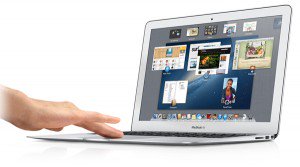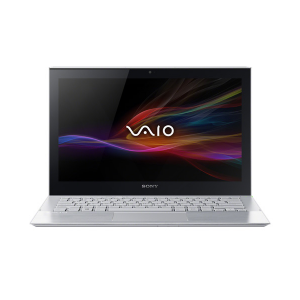By Anca Gagiuc on July 9, 2013 in Technology
In a world where people are always on the road to somewhere, portability is key to ensure that technology doesn’t slow them down. The power of notebooks has been on the rise for quite some time now, and the leading product developers continue to improve their best-in-class work each year.
Two notable new models caught our eye with power, light weight, and gorgeous looks: the 13-inch MacBook Air and the 13-inch Sony Vaio Pro. The major difference is in the OS – OS X Mountain Lion for the Air and Windows 8 for the Vaio.
 We’ve briefly presented the new air of the new MacBook Air 13, but it deserves a bit of additional attention. Strong features make it the leading slim and light laptop in the US. According to NPD, it outsold all Windows Ultrabooks combined in the US retail market during the first trimester of 2013. Ageless in appearance, Apple hasn’t changed the Air’s physical design in years, but it still transports you to the future. The fact that it’s so slim – only 0.11-0.68 inches thick and 2.96 lbs. light, makes some think it is not solid enough, but it is not fragile either. The aluminum case is much more resistant than it feels.
We’ve briefly presented the new air of the new MacBook Air 13, but it deserves a bit of additional attention. Strong features make it the leading slim and light laptop in the US. According to NPD, it outsold all Windows Ultrabooks combined in the US retail market during the first trimester of 2013. Ageless in appearance, Apple hasn’t changed the Air’s physical design in years, but it still transports you to the future. The fact that it’s so slim – only 0.11-0.68 inches thick and 2.96 lbs. light, makes some think it is not solid enough, but it is not fragile either. The aluminum case is much more resistant than it feels.
If the design needs no alteration (actually, competitors seem to find inspiration in the Air’s lines), the technical specs show continuous focus. The new features make the device even more fabulous than the previous models: the fourth generation processor Intel Haswell, made available the new i7 of 2.0GHz that drives 12 hours of battery life.
The battery life should improve even further under the OS X Mavericks, which will add even more battery life-preserving features to Apple’s OS. The 802.11 ac Wi-Fi networking card complemented by the new AirPort Extreme router speeds up transfer files between computer and network attached storage. The addition of dual mics has a great impact on call quality when not using headphones, and the new Intel HD Graphics 5000 brings up to 40 percent faster graphic performance over the previous HD 4000.
The basics show a few changes, too: the 1440 x 900, 13.3-inch display is no Retina display (yet?) but has LED backlighting that makes colors bright and vibrant, storage up to 512GB, up to 8GB RAM, two USB 3 ports, and the lightning-fast Thunderbolt port. The price starts at $1,099 for a configuration with 4GB of memory and 128GB SSD.
 Sony VAIO Pro, inspired by Intel, wears some serious hardware: up to core i7 Haswell CPU that bumps up the battery life, up to 512GB SSD, up to 8GB RAM, 13.3-inch 1080 display, 2 USB 3 ports and HDMI output. In addition to this, it flaunts a 13.3-inch LED backlit full HD IPS Triluminous for Mobile touch display at 1920 x 1080 driven by Intel’s HD Graphics 4400. Wi-Fi is 802.11a/b/g/n wireless networking with Intel Wireless Display technology. An extra battery almost doubles the energy of the Vaio Pro 13, from 6½ hours of the out of the box one, to 13 hours. A relevant test in this regards was done by The Wall Street Journal’s fabulous technology columnist, Walt Mossberg.
Sony VAIO Pro, inspired by Intel, wears some serious hardware: up to core i7 Haswell CPU that bumps up the battery life, up to 512GB SSD, up to 8GB RAM, 13.3-inch 1080 display, 2 USB 3 ports and HDMI output. In addition to this, it flaunts a 13.3-inch LED backlit full HD IPS Triluminous for Mobile touch display at 1920 x 1080 driven by Intel’s HD Graphics 4400. Wi-Fi is 802.11a/b/g/n wireless networking with Intel Wireless Display technology. An extra battery almost doubles the energy of the Vaio Pro 13, from 6½ hours of the out of the box one, to 13 hours. A relevant test in this regards was done by The Wall Street Journal’s fabulous technology columnist, Walt Mossberg.
Design wise, it’s wonderful to see that although it resembles the above mentioned Air, Sony hasn’t exactly copied the design. It’s angular-looking with masculine edges, much sharper that those of MacBook Air and thicker also – 0.50 – 0.68 inches. It comes in two colors: Carbon Black and Silver. Instead of the aluminum body of the Air, Sony chose mostly carbon fiber for its device which provides less flexibility, but greater tensile strength. The use of carbon fiber is actually what helped Sony lower the weight of the notebook, bringing it down at 2.34 lbs. without the additional battery. The feel of a high-end laptop is at hand– the keyboard rest is made of aluminum, giving it that cool touch of metal. The price for a 4GB of memory and 128GB SSD starts at $1,250, increased by the optional second battery to $1,400.
In conclusion, Intel made a big change in battery life with its fourth generation processor. Whatever notebook you chose to buy, make sure it’s one equipped with one of these new chips.


